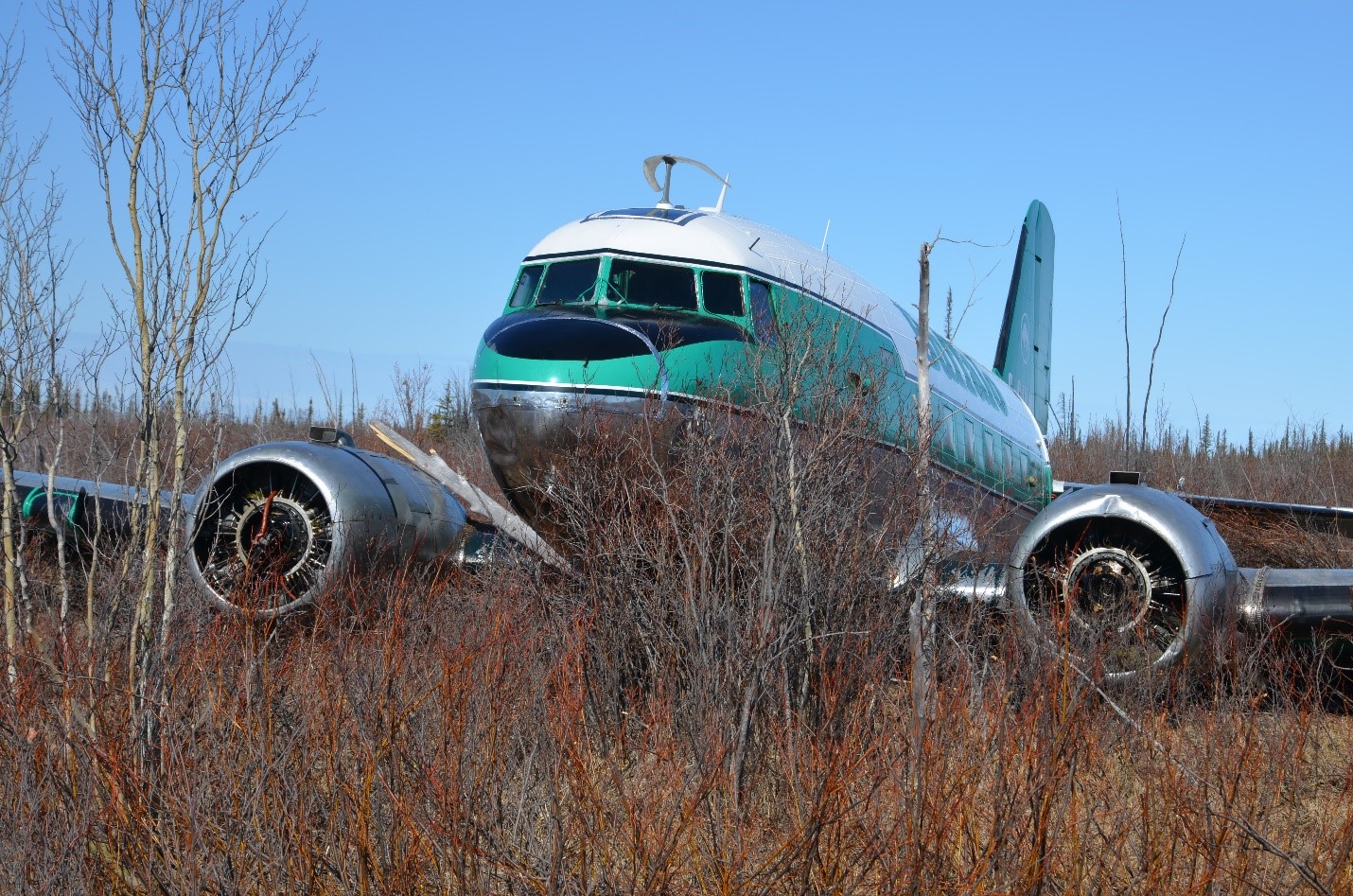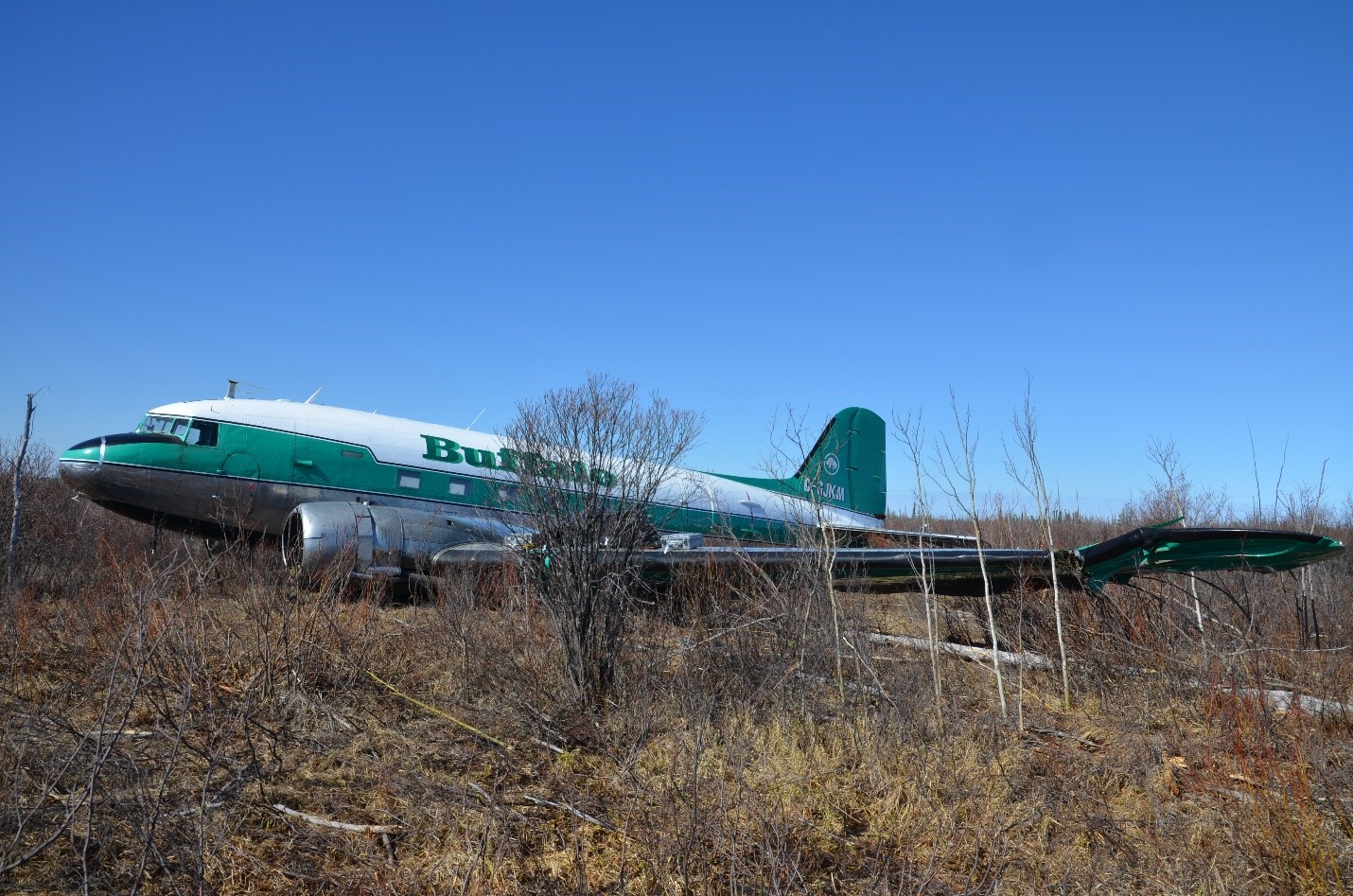Engine power loss and forced landing
Douglas DC3C-S1C3G
Hay River/Merlyn Carter Airport, Northwest Territories
The occurrence
On , a Douglas DC3C-S1C3G aircraft, operated by Buffalo Airways, was conducting a cargo flight from Hay River/Merlyn Carter Airport (CYHY), Northwest Territories, to Yellowknife with 2 crew on board. During the initial climb, one engine lost complete power. The crew elected to return to CYHY, however, they were unable to maintain altitude. The crew declared a MAYDAY and a forced landing was executed approximately 3.5 nautical miles southeast of CYHY. There were no injuries. The aircraft was substantially damaged, but there was no post-impact fire. The TSB is investigating.
Media materials
News release
Investigation report: May 2019 engine power loss and forced landing.
Read the news release
Deployment notice
TSB is deploying a team of investigators to the site of a forced landing at the Hay River/Merlyn Carter Airport, Northwest Territories
The Transportation Safety Board of Canada (TSB) is deploying a team of investigators to the site of a forced landing that occurred on 3 May at the Hay River/Merlyn Carter Airport, Northwest Territories. The TSB will gather information and assess the occurrence.
Investigation information
Download high-resolution photos from the TSB Flickr page.
Class of investigation
This is a class 4 investigation. These investigations are limited in scope, and while the final reports may contain limited analysis, they do not contain findings or recommendations. Class 4 investigations are generally completed within 220 days. For more information, see the Policy on Occurrence Classification.
TSB investigation process
There are 3 phases to a TSB investigation
- Field phase: a team of investigators examines the occurrence site and wreckage, interviews witnesses and collects pertinent information.
- Examination and analysis phase: the TSB reviews pertinent records, tests components of the wreckage in the lab, determines the sequence of events and identifies safety deficiencies. When safety deficiencies are suspected or confirmed, the TSB advises the appropriate authority without waiting until publication of the final report.
- Report phase: a confidential draft report is approved by the Board and sent to persons and corporations who are directly concerned by the report. They then have the opportunity to dispute or correct information they believe to be incorrect. The Board considers all representations before approving the final report, which is subsequently released to the public.
For more information, see our Investigation process page.
The TSB is an independent agency that investigates air, marine, pipeline, and rail transportation occurrences. Its sole aim is the advancement of transportation safety. It is not the function of the Board to assign fault or determine civil or criminal liability.

